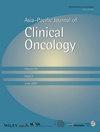Exploring the molecular mechanisms network of breast cancer by multi-omics analysis
Abstract
Background
Breast cancer (BC), the most prevalent malignancy in women globally, still lacks comprehensive research on its molecular targets and necessitates further investigation into the underlying molecular mechanisms driving its initiation and progression.
Methods
The GSE20685 Series Matrix File downloaded from the Gene Expression Omnibus database was divided into a high-risk group (n = 49) and a low-risk group (n = 278) to construct the co-expression network.
Results
Four hub genes were identified based on the Weighted Gene Co-expression Network Analysis. Gene Ontology and Kyoto Encyclopedia of Genes and Genomes functional enrichment analyses were performed. Hub gene immune infiltration was investigated using the Tumor Immune Estimation Resource database, and CD4+ T cell expression levels were substantially correlated with hub gene expression. Based on the CancerRxGene database (Genomics of Drug Sensitivity in Cancer database), it was found that the hub genes were highly sensitive to common chemotherapy drugs such as AKT inhibitor VIII and Erlotinib. The expression of Secreted Frizzled-Related Protein 1, melanoma-inhibiting activity (MIA), and Keratin 14 was related to tumor mutation burden, and the expression of MIA also affected the microsatellite instability of the tumor. This study employs multi-omics analysis to investigate the molecular network associated with the prognosis of BC, highlighting its intricate connection with the immune microenvironment.
Conclusion
These findings pinpoint four crucial genes in BC progression, offering targets for further research and therapy. Their connections to immune infiltration and chemotherapy sensitivity underscore complex interactions in the tumor microenvironment.


 求助内容:
求助内容: 应助结果提醒方式:
应助结果提醒方式:


